 W
WThe Federal Reserve System is the central banking system of the United States of America. It was created on December 23, 1913, with the enactment of the Federal Reserve Act, after a series of financial panics led to the desire for central control of the monetary system in order to alleviate financial crises. Over the years, events such as the Great Depression in the 1930s and the Great Recession during the 2000s have led to the expansion of the roles and responsibilities of the Federal Reserve System.
 W
WThe Federal Reserve Act was passed by the 63rd United States Congress and signed into law by President Woodrow Wilson on December 23, 1913. The law created the Federal Reserve System, the central banking system of the United States.
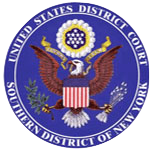 W
WBloomberg L.P. v. Board of Governors of the Federal Reserve System, 1:08-cv-09595, was a lawsuit by Bloomberg L.P. against the Board of Governors of the Federal Reserve System for disclosure of information about banks and other financial institutions that had borrowed from the Federal Reserve discount window during the United States housing bubble and ensuing financial crisis.
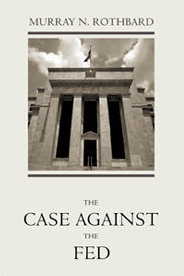 W
WThe Case Against the Fed is a 1994 book by Murray N. Rothbard taking a critical look at the United States Federal Reserve, fractional reserve banking, and central banks in general. It details the history of fractional reserve banking and the influence that bankers have had on monetary policy over the last few centuries.
 W
WConsumer Financial Protection Bureau v. RD Legal Funding, LLC, 332 F. Supp. 3d 729, was a lawsuit by the Consumer Financial Protection Bureau (CFPB) and the Attorney General of New York against Defendants RD Legal Funding, LLC, RD Legal Finance, LLC, RD Legal Funding Partners, LP and Roni Dersovitz, the founder and owner of the RD Entities. On June 21, 2018, Senior U.S. District Judge Loretta Preska posited that Title X of the Dodd–Frank Wall Street Reform and Consumer Protection Act, which established the CFPB as an independent bureau within the Federal Reserve System, was unconstitutional. This holding is in contrast with the en banc holding of the United States Court of Appeals for the District of Columbia Circuit in PHH Corp. v. Consumer Financial Protection Bureau, and partially adopts the separate dissents of Judge Brett Kavanaugh and Judge Karen L. Henderson in that case.
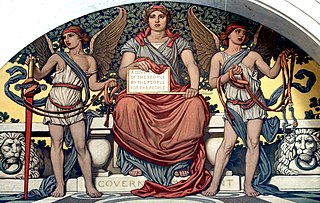 W
WThe Federal Reserve System has faced various criticisms since it was authorized in 1913. Nobel laureate economist Milton Friedman and his fellow monetarist Anna Schwartz criticized the Fed's response to the Wall Street Crash of 1929 arguing that it greatly exacerbated the Great Depression. More recent prominent critics include former Congressman Ron Paul.
 W
WThe Depository Institutions Deregulation and Monetary Control Act of 1980 is a United States federal financial statute passed in 1980 and signed by President Jimmy Carter on March 31. It gave the Federal Reserve greater control over non-member banks.It forced all banks to abide by the Fed's rules. It relaxed the rules under which national banks could merge. It removed the power of the Federal Reserve Board of Governors under the Glass–Steagall Act to use Regulation Q to set maximum interest rates for any deposit accounts other than demand deposit accounts. It allowed Negotiable Order of Withdrawal accounts to be offered nationwide. It raised the deposit insurance of US banks and credit unions from $40,000 to $100,000. It allowed credit unions and savings and loans to offer checkable deposits. It allowed institutions to charge any loan interest rates they chose.
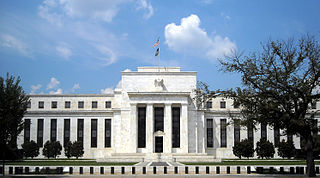 W
WThe Marriner S. Eccles Federal Reserve Board Building houses the main offices of the Board of Governors of the Federal Reserve System. It is located at 20th Street and Constitution Avenue, N.W., in Washington, D.C. The building, designed in the stripped classicism style, was designed by Paul Philippe Cret and completed in 1937. President Franklin Delano Roosevelt dedicated the building on October 20, 1937.
 W
WMilton Courtright Elliott was a lawyer and judge from Norfolk, Virginia. He became counsel to the Federal Reserve Board.
 W
WEnd the Fed is a 2009 book by Congressman Ron Paul of Texas. The book debuted at number six on the New York Times Best Seller list and advocates the abolition of the United States Federal Reserve System "because it is immoral, unconstitutional, impractical, promotes bad economics, and undermines liberty." The book argues that the booms, bubbles and busts of the business cycle are caused by the Federal Reserve's actions.
 W
WExecutive Order 6102 is an executive order signed on April 5, 1933, by US President Franklin D. Roosevelt "forbidding the hoarding of gold coin, gold bullion, and gold certificates within the continental United States." The executive order was made under the authority of the Trading with the Enemy Act of 1917, as amended by the Emergency Banking Act in March 1933.
 W
WIn the United States, the federal funds rate is the interest rate at which depository institutions lend reserve balances to other depository institutions overnight on an uncollateralized basis. Reserve balances are amounts held at the Federal Reserve to maintain depository institutions' reserve requirements. Institutions with surplus balances in their accounts lend those balances to institutions in need of larger balances. The federal funds rate is an important benchmark in financial markets.
 W
WA Federal Reserve Bank is a regional bank of the Federal Reserve System, the central banking system of the United States. There are twelve in total, one for each of the twelve Federal Reserve Districts that were created by the Federal Reserve Act of 1913. The banks are jointly responsible for implementing the monetary policy set forth by the Federal Open Market Committee, and are divided as follows:
 W
WThe Federal Reserve of the United States gathers and publishes certain economic data and releases them as a Federal Reserve Statistical Release.
 W
WThe Federal Reserve Transparency Act of 2013 is a bill that would direct the Government Accountability Office (GAO) to prepare, within 12 months of enactment, an audit of the Board of Governors of the Federal Reserve System and the Federal Reserve Banks.
 W
WThis article is about the history of the United States Federal Reserve System from its creation to the present.
 W
WDenis M. Hughes is chairman and Class C director of the New York Federal Reserve Board, as well as president of the 2.5-million-member New York State AFL-CIO.
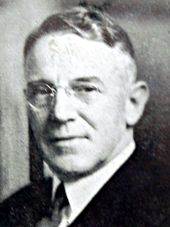 W
WJohn Cunningham Martin was a member of the US House of Representatives from Illinois.
 W
WA monetary hawk, or hawk for short, is someone who advocates keeping inflation low as the top priority in monetary policy. In contrast, a monetary dove is someone who emphasizes other issues, especially low unemployment, over low inflation.
 W
WMonetary policy concerns the actions of a central bank or other regulatory authorities that determine the size and rate of growth of the money supply. For example, in the United States, the Federal Reserve is in charge of monetary policy, and implements it primarily by performing operations that influence short-term interest rates.
 W
WThe National Audiovisual Conservation Center, also known as the Packard Campus for Audio-Visual Conservation, is the Library of Congress's audiovisual archive located inside Mount Pony in Culpeper, Virginia.
 W
WFederal Reserve Notes, also United States banknotes, are the banknotes currently used in the United States of America. Denominated in United States dollars, Federal Reserve Notes are printed by the United States Bureau of Engraving and Printing on paper made by Crane & Co. of Dalton, Massachusetts. Federal Reserve Notes are the only type of U.S. banknote currently produced. Federal Reserve Notes are authorized by Section 16 of the Federal Reserve Act of 1913 and are issued to the Federal Reserve Banks at the discretion of the Board of Governors of the Federal Reserve System. The notes are then put into circulation by the Federal Reserve Banks, at which point they become liabilities of the Federal Reserve Banks and obligations of the United States.
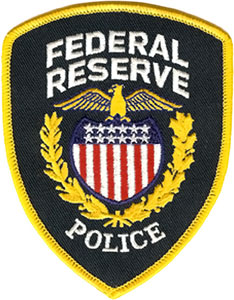 W
WThe U.S. Federal Reserve Police is the law enforcement unit of the Federal Reserve System, the central banking system of the United States.
 W
WA prime rate or prime lending rate is an interest rate used by banks, usually the interest rate at which banks lend to customers with good credit. Some variable interest rates may be expressed as a percentage above or below prime rate.
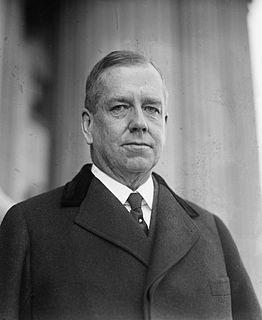 W
WFrederic Mosley Sackett served as a United States Senator from Kentucky and ambassador to Germany during the Hoover Administration.
 W
WJohn Edward Sexton is an American lawyer and academic. Sexton served as the fifteenth President of New York University, from 2002 to 2015. From 1988 to 2002, he served as Dean of the NYU School of Law, during which time NYU became one of the top five law schools in the country according to U.S. News and World Report. From January 1, 2003 to January 1, 2007, he was the Chairman of the Board of the Federal Reserve Bank of New York; in 2006, he served as chair of the Federal Reserve System's Council of Chairs.
 W
WThe Structure of the Federal Reserve System is unique among central banks, with both public and private aspects. It is described as "independent within the government" rather than "independent of government".
 W
WThe substitute check is a negotiable instrument that represents the digital reproduction of an original paper check. As a negotiable payment instrument in the United States, a substitute check maintains the status of a "legal check" in lieu of the original paper check as authorized by the Check Clearing for the 21st Century Act. Instead of presenting the original paper checks, financial institutions and payment processing centers transmit data from a substitute check electronically through either the settlement process, the United States Federal Reserve System, or by clearing the deposit based on a private agreement between member financial institutions of a clearinghouse that operates under the Uniform Commercial Code (UCC).
 W
WThe Term Securities Lending Facility (TSLF) was a 28-day facility managed by the United States Federal Reserve offering Treasury general collateral (GC) to the primary dealers in exchange for other program-eligible collateral. It was created to combat the liquidity crisis in American banks that had begun in late 2007, part of the broader financial crisis of 2007-2008. The facility was open from March 2008 through January 2010.